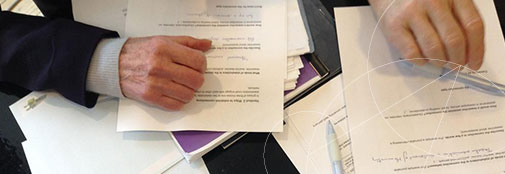
Writing for publication in STEM education research
Course aims
In this course, STEM education researchers work, under guidance, on their scholarly writing skills in order to increase the likelihood that top-ranking journals in their field will accept their papers.
The learning objectives for the course are to help participants:
- Write an article from wherever they are in their doctoral project from first draft to final form, ready for submission. Each article will be subjected to review and feedback from peers and staff during the course.
- Acquire analytical tools to align their doctoral research projects with international norms.
- Make strategic and meta-strategic decisions when writing for publication in an international context.
- Acquire basic tools and foci for scholarly writing as well as norms and genres and an awareness of ‘bad’ practice.
- Respond to reviews including simulated reviews from faculty who are all very experienced.
- Carry out publication-level writing and revising for publication-ready articles.
- Read research writing research in STEM education.
The course is based on active participation. It will consist of staff presentations, individual work, group-work and class discussion.
Participants
The course aims at international doctoral-students who work within educational research in general or science education in particular.
Preparation for each of three two-day course rounds
Preparation before the course
Participants hand in an outline of a paper that they want to write or improve on during the course. In addition participants are asked to identify two possible journals where they may want to publish their paper (along with a brief justification of why they are appropriate). Based on this choice, the course leaders will identify one or two papers from these journals on which the participant performs a review using a template devised by the course leaders. These reviews are handed in during the first meeting.
First meeting
In the first half of the first meeting, participants will analyse the argumentative structure of their own paper-outline, as well as the papers they have reviewed. For this purpose, the participants will use an innovative analytical tool to lay bare the argumentative structure of scholarly papers. The second half of the first meeting focuses on good quality writing in English. In addition, participants will take part in an analysis of different journals in STEM education research in order to acquire knowledge of the different norms and genres for, and of, different journals.
Preparation for the second meeting
Participants continue to work on their paper based on the input they received during the first meeting. During this period, smaller groups of participants make bi-weekly exchanges of small text excerpts from their paper (max 250 words). In this way all participants give and receive feedback on writing. Two weeks before the second meeting, the participants hand in the current version of their paper for interim (formative) review by course leaders and guest lecturers.
Second meeting
At the second meeting there will be an in-depth writing workshop where participants can discuss more thoroughly with peers, course leaders and guest lecturers about the specific challenges they face when writing their paper. This includes both plenum and small-group sessions. Also, during this meeting participants will study different authentic decision letters from editors and acquire strategies for responding to such letters.
Preparation for third meeting
The bi-weekly exchanges of text excerpts continue. Two weeks before the third meeting participants will submit a coherent draft of their paper. The course leaders will provide reviews based on international journal protocols based on the journals the participant would submit to: second reviewers will be other participants. Based on the reviews, course leaders will write what corresponds to an editorial decision letter for each paper.
Third meeting
Final: submitted papers have been reviewed by staff beforehand and those reviews will be shared and interpretations and future actions based on those reviews will be discussed for each.
Share peer reviews first and then compare to staff reviews to validate peer usefulness: How to respond to editor reviews and comments using the ones we actually make.
More information
Course location
The course will take place at the Department of Science Education, Copenhagen, Denmark.
Costs
All tuition is paid for by the University of Copenhagen. Student costs include travel to the Department of Science Education three times and accommodation for one or two nights for each of the three rounds in Copenhagen. Two lunches and one group dinner for each of the three rounds is also paid by the University of Copenhagen.
Sign up before 15th of September
Explain details of your current position and something about your doctoral project. Tell why this course would be useful to you and whether you could meet for all three rounds. Send your interest in joining the course to Robert Evans evans@ind.ku.dk.
